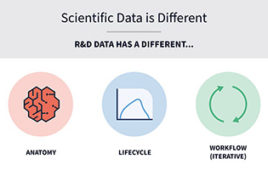Take Me Out to the Ball Game: Three regulatory scenarios
If rules directly impact on life and death, wouldn’t you prefer an independent Umpire?
 |
Imagine three baseball games. The first is a pick-up “sandlot” game, where close calls and rule infractions are often handled by heated discussions among the players. The “umpire” consists of, in effect, the collective members of the teams playing.
In the second game, in a loosely organized gym class, there is an official umpire who has two jobs: to make rule decisions and to help the players learn skills and build an enjoyment for the physical activity. The umpire is somewhat independent of the players, but to some extent, may have conflicting or competing relationships with the team members.
The third game is the deciding match of the professional World Series. The umpire is completely separate from, and in a somewhat antagonistic relationship to, the competing players.
The first scenario may well be the most fun and the second may be the most educational, but without a doubt, it is the third scenario that will most effectively assure clear adherence to the rules of the game. And, if those rules directly impact on health and safety, on life and death, wouldn’t you prefer that independent umpire?
Regulatory scenarios
There are three major pharmaceutical regulatory scenarios operating in different parts of the globe. If an organization is trying, with all good intentions, to conform to the regulatory requirements for a laboratory information management system (or any other aspect of regulated operations) understanding which scenario is in play is an excellent first step.
In China — the pick up game — the same entity (the central government) both owns the factory and controls the regulatory process. The umpire is a team member and the result is sometimes a loss of independent control. It’s an exciting entrepreneurial atmosphere; probably more fun than working in a staid American factory. And it isn’t the main cause of recent quality control problems in API facilities (they are largely a result of the adoption of a multi-use factory design, so the same plant makes a pharmaceutical product and an industrial cleaner). Though, a truly independent regulatory body would enforce high quality standards — and a “pick-up” umpire who’s a team member is less likely to insure adherence to standards and guidelines.
In some other countries — Sweden, for example — the government not only performs the regulatory function but also is a large — perhaps majority — stockholder in the business operation. Like the gym teacher with multiple and potentially conflicting goals, some rules may be compromised because of other objectives. The result isn’t necessarily a reduction of quality assurance, but the potential is there and must be continually monitored. The semi-independent umpire is likely to be more supportive of development and is likely to help improve public access to new therapies — an important role for regulatory agencies — but is less likely to be the strict enforcer of regulatory requirements.
The U.S. system is not without flaws. Frustrations with the operations and policies of the United States Food and Drug Administration are as common as shouts of “kill the ump” in a major league stadium. For example, if the FDA can review and approve an H1N1 vaccine application in days why do other BLAs, NDAs, and 510(k)s take months, or even years, for evaluation? Recognizing that modified application timelines are usually associated with large public health concerns, the norm is designed and produces the greatest safety margin and minimizes harm to the players and the fans.
But given the critically important nature of the decisions made, would you prefer an independent umpire?
Sandy Weinberg is an associate professor of health care management and Ron Fuqua is an assistant professor of health care management at Clayton State University. They may be reached at [email protected].




